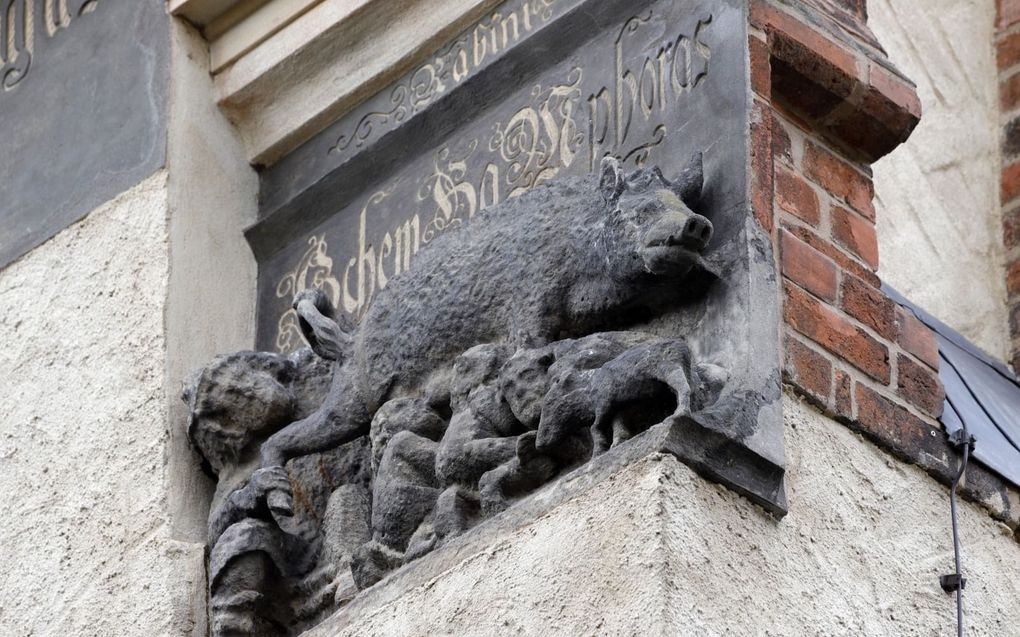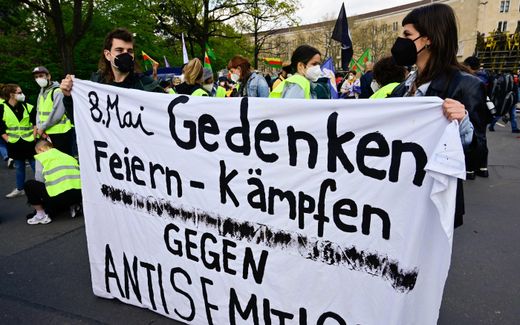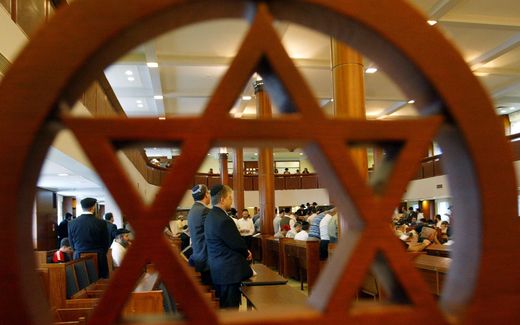Yet again, a judge studies controversial Jews' sow at Wittenberg church
31-05-2022
Central Europe
Geerten Moerkerken, RD

Photo EPA, Felipe Trueba
Central Europe
On Monday, the highest court of Germany considered whether the controversial "Judensau" might remain at the city church of Wittenberg. What is the matter?
A Judensau, what is that?
A so-called Jews' sow depicts Jews in obscene contact with a sow, a female pig. Such images appeared in several places in the Middle Ages and were intended to ridicule Judaism and Jews – to whom pigs are unclean animals.
What does something like that do on a church wall?
Although they were visible elsewhere, Jewish sows are most often found on churches. It marks the anti-Jewish sentiments that were widespread in society and within the church for centuries. In the church, these feelings were often mixed with theological motives. Jews were said to have "committed God's murder" with the crucifixion of Jesus. They are children of the devil - often depicted as a pig in the past.
But this was in the Middle Ages, right?
That is true, but a number of these images are still visible in the public space – even after the horrors of the Holocaust, in which millions of Jews were killed during the Second World War. Also, on the church wall in Wittenberg. There, the Jews' sow concerns a relief from 1305 with a pig whose rump is examined by a rabbi who lifts the tail, while two other Jews drink from the sow's nipples. The inscription reads "Schem HaMphoras". This refers to the Hebrew "Shem HaMephorash," which in the Jewish mystical tradition means the "hidden Name of God."
Wittenberg, who lived there again?
The East German city is especially famous as the 'cradle' of the Reformation. Martin Luther lived there for most of his life, as did his friend Philipp Melanchthon. Since the last century, the city has been officially called "Lutherstadt Wittenberg".
Luther himself saw the then two-centuries-old Jewish sow hanging from 'his' church. He wrote that the Jew who looks under the pig's tail is a rabbi who studies the Talmud "as if he were reading something very acute or special there."
In 1933 Adolf Hitler was made an honorary citizen of the city. When the Nazi leader visited Wittenberg, he praised Luther and referred with approval to his writing "On the Jews and Their Lies". In it, the reformer states, among other things, that synagogues and Jewish schools must be set on fire, that rabbis must be prohibited from preaching, and that money and houses of Jews must be confiscated. The city council denounced Hitler's honorary citizenship in 2010.
How come a judge is now ruling on this?
The Jews' sow in Wittenberg has been causing controversy for some time. The image came under discussion in 1988 at the 50th anniversary of Kristallnacht - in which Nazis destroyed synagogues and Jewish shops - after which a Holocaust memorial plaque was placed at the church.

The Messianic theologian, Dr Richard Harvey from London, started a signature campaign in 2016 – on the eve of the commemoration of 500 years of the Reformation – to have the relief removed. For the same purpose, silent vigils were held weekly in the market square for several months. However, both the consistory of the city church and the city council decided to leave the Jewish sow hanging.
In 2018, Michael Düllmann, a member of a Jewish congregation in Berlin, filed a lawsuit against the church congregation in Wittenberg to have the statue removed. He was unsuccessful in court and in 2020 also during the appeal. Now he has turned to the highest German court, the Bundesgerichtshof, which therefore dealt with the case on Monday. A ruling is expected within a few weeks.
But why would you let such an image hang?
Precisely because it shows the dark page of – also ecclesiastical – anti-Semitism, the question thus touches on many other current discussions about how to deal with problematic sides of our history. Proponents point out that images like this belong to that past and that their visibility serves as a reminder and warning. Opponents argue that this can be displayed in a museum, but not in a public space – let alone in a church building.
A number of churches have removed a Jews' sow; it is still visible in about thirty other places. For example, in 2020, the discussion also took place in Calbe, Germany, which, like Wittenberg, is located in the state of Saxony-Anhalt. There, the congregation did not want to reinstate a Jewish sow that had been removed for restoration because it "is diametrically opposed to our current attitude to the Jewish roots of our culture and faith, and is not aimed at reconciliation between religions." However, the image had to be replaced by the Saxony-Anhalt Monument Service, under threat of a penalty. In the end, the church did this under protest and covered the image.
This article was translated by CNE.news and previously published in Dutch daily Reformatorisch Dagblad.
Related Articles





